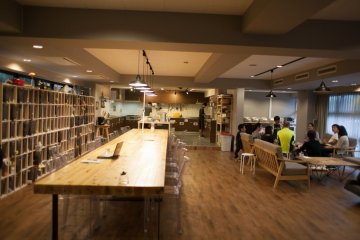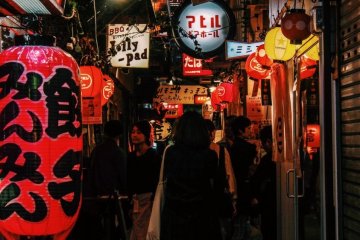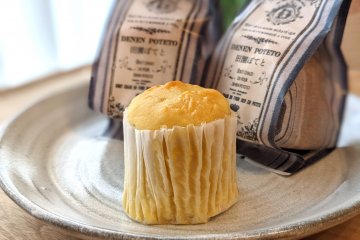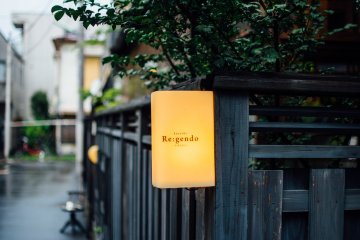
Oakhouse: Social Residence Higashi Koganei
Oakhouse Social Residence Koganei in Tokyo's Koganei suburb is a share house that offers long-term residence to both Japanese and international residents.

Ajinomoto Stadium was Tokyo's official stadium for the 2019 Rugby World Cup. It is easily accessible from Tokyo Station in just 40 minutes. The Ajinomoto Stadium is also a 20-minute drive from Shinjuku Station.
This open-dome stadium can seat almost 50,000 people. It opened in March 2001. The grandstand is divided into two levels, an upper and a lower one. If you get hungry during the game, the stadium has a variety of restaurants serving both Japanese and Western food.
Besides being home to two J-League teams (professional football league in Japan), the stadium is also known as the venue for many other events such as concerts, flea markets, etc.
From Tokyo Station take the JR Yamanote for Shinjuku Station and transfer to the Keio Line. From Tobitakyu Station it’s a 5-minute walk to Ajinomoto Stadium.

Oakhouse Social Residence Koganei in Tokyo's Koganei suburb is a share house that offers long-term residence to both Japanese and international residents.

Vous êtes à la recherche d'un logement sur Tokyo pour un séjour d'au minimum un mois ? Vous aimez le sport et faire de nouvelles rencontres ? Ne cherchez plus : la résidence partagée Higako Sports située à l'ouest du coeur de Tokyo gérée par le groupe Oakhouse est faite pour vous !

Harmonica Allee is located in the trendy area of Kichijoji and is a section of local izakaya bars that are only a few minutes' walk from the train station. The alleys of Harmonica Allee are narrow and at the same time full of life. There you can find fashion, local market traders, which are open during the day, as well as izakayas and pubs that can be visited until late at night. Since the 1990s, Harmonica Allee has been very popular, especially among the locals, for its stand-up bars with inexpensive snacks in the late evening. The area was named for the way this tight tangle of restaurants, shops, and bars resembles a harmonica. It can get full quickly, but it definitely never gets uncomfortable!

Avec plus de 40 ans d'expérience, cette pâtisserie a remporté plusieurs prix grâce à son savoir-faire. Régalez vos papilles avec des gâteaux à la patate douce, du pain au fromage ou bien avec un danois à l'abricot. Si vous vous sentez très affamé, leur menu complet pourra sans doute vous séduire.

Re:gendo is a cafe, apparel and arts and crafts store found in the quaint backstreets of Nishi-Ogikubo, just a few minutes from the station. It embodies everything about Shimane prefecture, capturing the essence of its history, culture and beauty that help inspire everything on offer here. Located in a spectacular wooden structure, which is said to be around 90 years old, Re:gendo is an homage to Shimane and the staff and owners take great care to display the cultural history of their beloved homeland. It’s a curious space, layed out over two floors. It acts as a thriving restaurant, apparel store, arts and crafts shop and a workshop space which focuses on teaching craftsmanship and culinary skills. The cafe recognizes the nuances involved in Shimane produce such as rice which it uses for its extremely popular, seasonal lunch menus musubi zen and nigiri zen. Musubi zen consists of a main fish or meat dish while nigiri showcases vegetable nigiri sushi. Both courses come with accompaniments including vegetables, pickles and miso soup. The ingredients at Re:gendo are sourced locally in Toyo or from Shimane. The cafe also does a fine collection of sweets (Shimane folk are particularly fond of wagashi or traditional Japanese confectionery). The apparel and crafts section, situated on the first floor adjacent to the cafe includes a range of arts and crafts from Shimane and a curated fashion line which uses a type of non-toxic dye from Shimane so it’s safer for pregnant women or customers with allergies. The second floor hosts regular workshops about local craftsmanship and cuisine. Visitors from all over the world come and participate in workshops and learn the intricacies involved in Shimane’s abundance of specialities. Re:gendo acts, then, as a local hub and a popular attraction for many of Tokyo’s Shimane transplants. Refined, cultured, respectful of ancient traditions and friendly, it should be considered an essential stop on any visit to Nishi-Ogikubo.

Hana Biyori (HANA・BIYORI), nestled next to the Yomiuriland amusement park in Inagi City, Tokyo, is an innovative flower park that offers a refreshing blend of nature and modern attractions. This park features a variety of seasonal gardens and floral displays, from vibrant cherry blossoms in spring to the rich colors of chrysanthemums in the fall. One of Hana Biyori’s standout features is its focus on sustainable practices, including natural irrigation systems and a variety of locally sourced products. The park’s dining area showcases handcrafted furniture made by wood salvaged from trees damaged by typhoons at Yomiuriland facilities. It also exclusively uses well water from the Tama Hills to nourish its plants, streams, and waterfalls. In addition to the breathtaking plant life, Hana Biyori offers workshops, seasonal events, and interactive art installations. Whether you’re looking to connect with nature, learn about sustainable gardening, or simply enjoy the beauty of seasonal flowers, HANA・BIYORI offers an experience that is both educational and visually captivating.

Yomiuriland est un parc d'attractions qui a ouvert ses portes en 1964. Il est situé sur des pentes vallonnées et abrite des manèges tels que des montagnes russes et des tobbogans aquatiques. Le parc abrite le stade Yomiuri Giants, l'un des terrains d'entraînement de l'équipe de baseball des Yomiuri Giants, et était le principal terrain d'entraînement avant l'achèvement du Tokyo Dome. Il est géré par le groupe Yomiuri, la société mère du conglomérat médiatique Yomiuri Shimbun. Un bain public (Onsen) a également été construit pour attirer une clientèle de séniors. Yomiuriland est également l'hôte de la plus grande illumination de la région de Kanto appelée "Jewellumination". Les spectacles et attractions nocturnes populaires incluent d’impressionnants spectacles de fontaines et une grande roue avec vue panoramique sur le paysage de nuit.

Le musée Ghibli est situé dans le paisible quartier de Mitaka à Tokyo et offre aux fans du célèbre studio d'anime un aperçu du monde fantastique créé par le réalisateur de films à succès Hayao Miyazaki. Le musée a ouvert ses portes le 1er octobre 2001 et est situé dans le parc Inokashira. Le premier niveau du studio est dédié aux processus de production des films Ghibli et montre le développement allant de l'ébauche à l'animation terminée. Le deuxième étage accueille des expositions temporaires. Vous pouvez également trouver des répliques de certains lieux et personnages des films, comme le Chat Bus de «Mon voisin Totoro» ou le robot grandeur nature issu du «Château dans le ciel». L'accès des visiteurs se fait uniquement sur réservation, comptez au moins 1 à 3 mois à l'avance, et les billets peuvent se vendre rapidement!. En dehors du Japon, les billets peuvent être achetés auprès de divers fournisseurs en ligne, tandis qu'au Japon, vous pouvez les acheter dans des distributeurs automatiques.